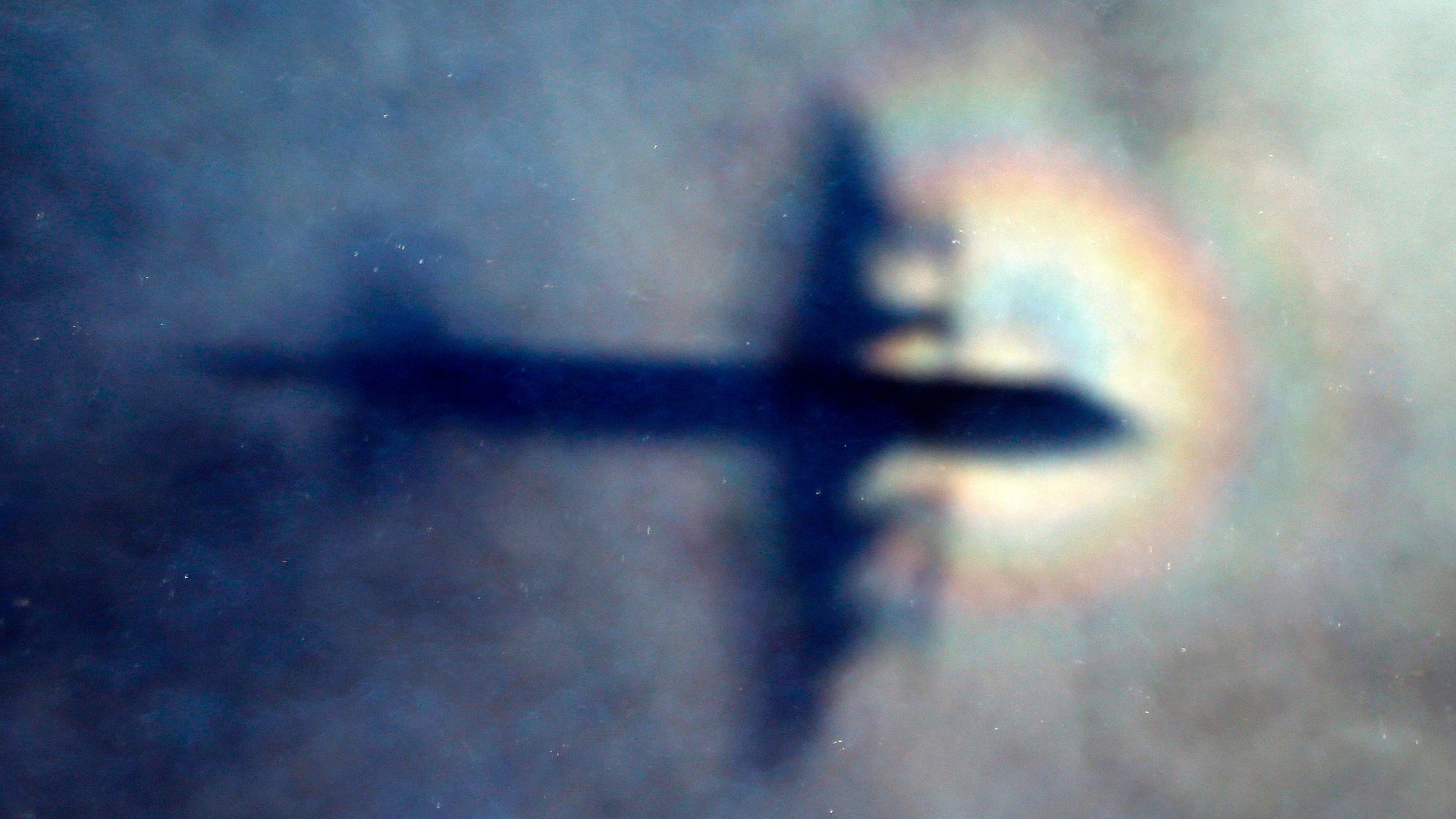The age of the missing airliner is coming to an end
Eighty years after her disappearance, many still wonder what happened to Amelia Earhart when she vanished somewhere in the Pacific Ocean on her fateful round-the-world flight.


Eighty years after her disappearance, many still wonder what happened to Amelia Earhart when she vanished somewhere in the Pacific Ocean on her fateful round-the-world flight.
Yet, though air travel is safer than it has ever been, the intervening time has not provided an enormous upgrade of our ability to track aircraft far from land-based radar.
In 2009, an Air France flight over the south Atlantic was lost beyond radar range, and though wreckage was recovered from the ocean surface days later, it took two years to find the flight data recorders, often known as “black boxes.” In 2014, Malaysia Airlines flight 370 disappeared over the Indian Ocean, and has never been found (paywall). In 2016, an Indian Air Force plane was lost for good over the Bay of Bengal.
Indeed, over international waters, air traffic controllers have no real-time knowledge of where planes are—they rely on flight plans, radio contact with pilots, and a system called ACARS that provides what is effectively text-message communication between planes and ground stations.
How is that possible in the age of GPS receivers and non-stop connectivity?
“You’re looking at the seat-back map on the airplane, and you know where you are, and the pilot knows,” Don Thoma, the CEO of a plane-tracking company called Aireon, tells Quartz. “But air traffic control has no idea.”
Thoma says that “aha moment” came to him and his team in 2009, the year Uber was founded to leverage the location-finding power of GPS in mobile phones to link up drivers and passengers. Airlines and air traffic controllers were also realizing that satellite navigation could play a major role in their work.
In 2010, the FAA mandated that all US aircraft would need to use a system called ADS-B, which means “Automatic Dependent Surveillance—Broadcast.” Essentially, by 2020, aircraft are required to broadcast their location, derived from GPS, each second.
A network of ground stations across the country collects this information and feeds it to air traffic controllers, who now use it to gain real-time knowledge of where planes are flying. If you’ve used the service FlightAware, you’ve seen ADS-B data.
Oceans of uncertainty
However, ground receivers need to be within about 172 miles (277 km) of the aircraft to collect ADS-B signals. Out over the ocean, there’s still a knowledge gap between the planes and the air traffic controllers they can’t reach. The solution Thoma had in mind when Aireon was founded in 2011: more satellites.
Specifically, Aireon has installed payloads on 75 Iridium satellites that have been launched over the past two years, with the final installment reaching orbit in a SpaceX rocket on Jan. 11. These payloads are designed to detect ADS-B signals wherever they are broadcast, whether over the open ocean or a mountain range, finally providing continuous tracking of aircraft anywhere on Earth. The satellites are already processing more than 13 billion ADS-B messages each month.
Aireon is a unique company: Its ownership includes Iridium, where Thoma had previously been an executive, and a group of national air traffic control authorities that are organized as public-private entities, allowing them to invest in companies like Aireon. Among them are AirNavCanada and the United Kingdom’s National Air Traffic Services.
Those two invested in part because they are responsible for the North Atlantic air corridor, which sees about 1,500 flights a day. Currently, the regulators have difficulty meeting their safety standards, and real-time tracking will help them to do it.
In the next six months, the Aireon system will go through a series of test and validation efforts with air traffic controllers in the US, Canada, and Europe. If all goes well the company will be certified for operations over land and water, and recognized by the European Aviation Safety Agency as an official air traffic control surveillance provider.
For airlines themselves, the benefits will include using that real-time traffic management to fly faster, in part because they will be able to fly more closely to other planes, which will cut fuel costs (and emissions). The speed will presumably please passengers, as will the added flexibility to dodge bad weather.
But will it make mysterious airline disappearances a thing of the past? Thoma thinks so. Real-time tracking should give investigators a far better starting point to hunt for lost aircraft than triangulating final radio transmissions sent an indeterminate time before the loss of the aircraft.
There are still humans in the loop, however, which is one source of trouble: Investigators believe that MH370’s radar transponder was turned off, either by a malfunction or by a pilot bent on disaster.
ADS-B, like all avionics, can be disabled to deal with an emergency. But even then, Thoma says, “we’d know exactly when that transponder was turned off, a big improvement.” And in part because of MH370, a new international standard will go into effect in 2021, requiring airlines to be able to track their planes in the event of an emergency once per minute.
Now, 80 years after Earhart, we may finally be finished losing our airplanes.